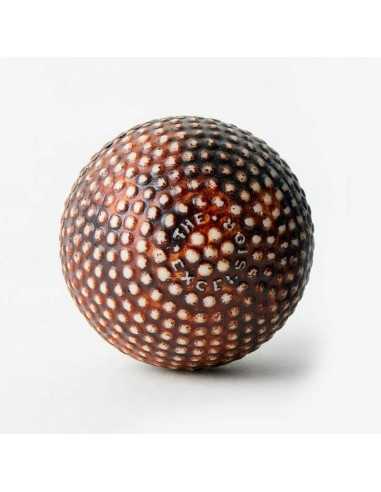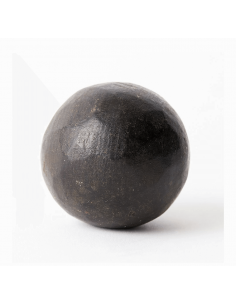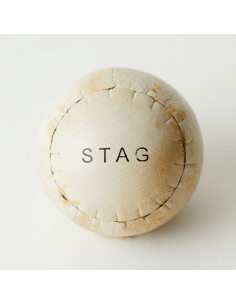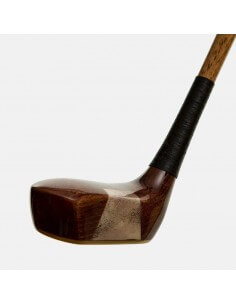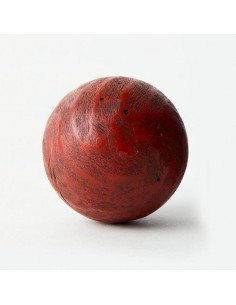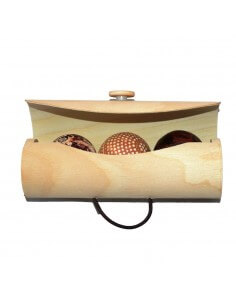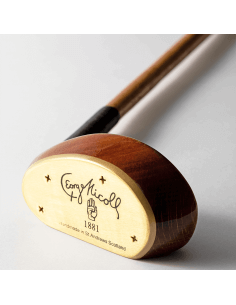Gutta Percha Bramble Golf Ball c1890
The Gutta Percha Bramble Golf Ball, dating back to around 1890, marks a pivotal moment in golf history. As the first significant evolution in golf ball design, the Gutta Percha ball made the game accessible to the masses. Handcrafted from the resin of the Sapodilla tree, native to Malaysia, it revolutionized how golf was played. This ball went through three key development stages: the Smooth Ball (c.1840), the Hammered Ball (c.1860), and finally, the Bramble Ball (c.1890). Players discovered that markings on the Smooth Ball affected its flight, leading to the creation of the Hammered Ball with its scratch marks. The Bramble Ball followed, with its distinctive dimpled surface, which improved flight control and distance.
Dr Robert Paterson invented the Gutta Percha ball in 1845. He found some chunks of rubber in his luggage from India, and he used them to make a golf ball. He found that this rubber could be readily moulded, and it was hard and durable.
The Gutta Percha ball was the first major development in the evolution of the golf ball as it made golf attainable for the masses. The ball was made from the resin of the Sapodilla tree indigenous to Malaysia and originally imported for use in dentistry. When heated in hot water, the resin was found to become very soft and easy to shape.
Later balls also had patterns that could affect the flight of the ball. The modern ball has a dimple pattern which was a follow on from the Gutta Percha period. The Bramble version was the version that most resembles modern dimple patterns. This ball is a close resemblance to an authentic Gutta Percha and is playable. Handmade in St Andrews, Scotland


